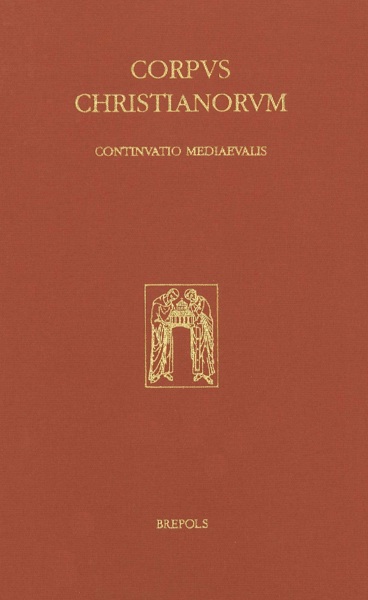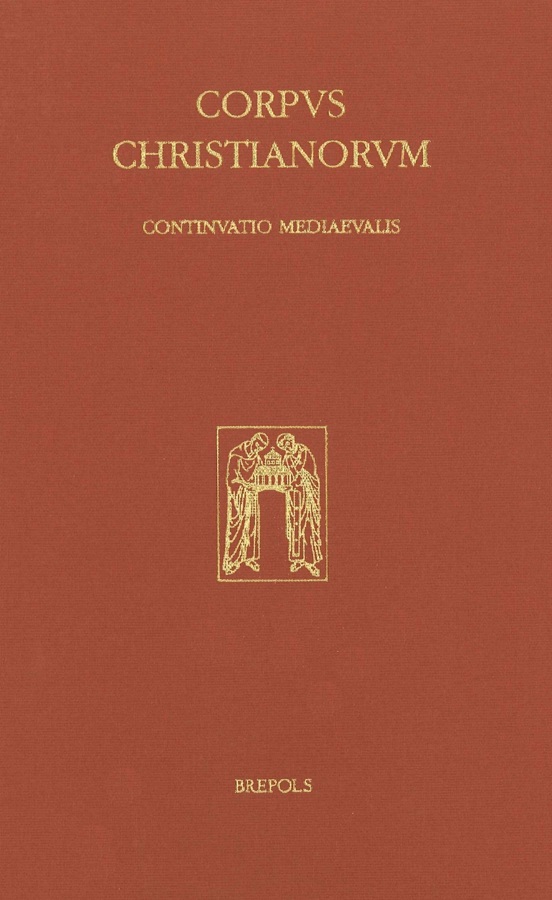
- Pages: 99 p.
- Size:155 x 245 mm
- Language(s):Latin
- Publication Year:2002
- € 120,00 EXCL. VAT RETAIL PRICE
- ISBN: 978-2-503-04791-1
- Hardback
- Available
“Oswald’s observations (the grammatical sources of which are traced by the editor) are instructive for any student of late medieval manuscripts. The editor has done a very good job in explaining the background and presenting the evidence for the text.”
(A.I. Doyle, in: The Journal of Ecclesiastical History, 54, 2003, p. 561)
« Une édition qui intéressera tout particulièrement les latinistes, mais qui rend aussi compte des exigences imposées aux copistes cartusiens. »
(G. Michiels, in : Scriptorium, 56, 2002, p. 238*) “Die vorliegende Edition ist mitsamt ihrer souveränen Einleitung für alle, die sich mit mittelalterlicher Textpflege auseinandersetzen, ein unverzichtbares Arbeitsinstrument.”
(Ch. Fasbender, in: Mittellateinisches Jahrbuch, 39, 2004, p. 156)
« Egan’s edition provides both an exemplary treatment of the historical setting of the ‘Opus pacis’ and a critical text based on two autograph manuscripts. […] This volume is a wonderful example of how much meaning can be read in a single book, fully and sensitively handled: those of us who concern ourselves with medieval Latinity or with the history of the Carthusian order are only a small number of the medievalists who can learn much from Belinda Egan’s edition of Oswald de Corda’s ‘Opus pacis’. »
(Michael G. Sargent, in: Speculum, 80, 2005, p. 1350)
The Opus pacis, a manual for Carthusian copyists and correctors of Latin manuscripts, was written in 1417 by Oswald de Corda, Bavarian-born vicar of the Grande Chartreuse; it is the earliest known example of an attempt to formulate principles of textual emendation. Although the Opus pacis includes discussions of orthography, etymology, and grammar, it focuses on the practical dilemmas of scribes faced with variant spellings, accents, and pronunciations. The twelve surviving manuscripts of the treatise testify to its popularity throughout the fifteenth and early sixteenth centuries: it circulated also outside the Carthusian Order (to the Cologne Crosiers, the Cologne Brethren of the Common Life, the Benedictines of St. Matthias in Trier, and the reforming bishop, Nicholas of Cues) and inspired the compilation of similar handbooks in other religious orders (the Windesheim and Bursfeld Congregations). This thesis offers the first complete critical edition of the text and description of the manuscripts, two of which are autographs. The accompanying study examines the Carthusian tradition of textual uniformity, the biography of Oswald de Corda, the sources and structure of the Opus pacis, and the use and influence of the work within and outside the Carthusian Order. The study concludes by showing how Carthusian piety fundamentally inspired and encouraged these monks' concern for uniformity. Although the attitude of reverence toward the written word could inhibit criticism of sacred texts, the Opus pacis, recommends judicious emendation and looks forward to the work of Erasmus and other religious humanists of the sixteenth century.
Oswaldus de Corda — Opus pacis — ed. B.A. Egan
Oswaldus de Corda (appendix) — Oswaldi de Corda Opus pacis, Appendix I: Rubrica de cautelis notandis ab auctore anonymo confecta — ed. B.A. Egan
Oswaldus de Corda (appendix) — Oswaldi de Corda Opus pacis, Appendix II: Notabilia quaedam de correctione librorum ab auctore anonymo confecta — ed. B.A. Egan





